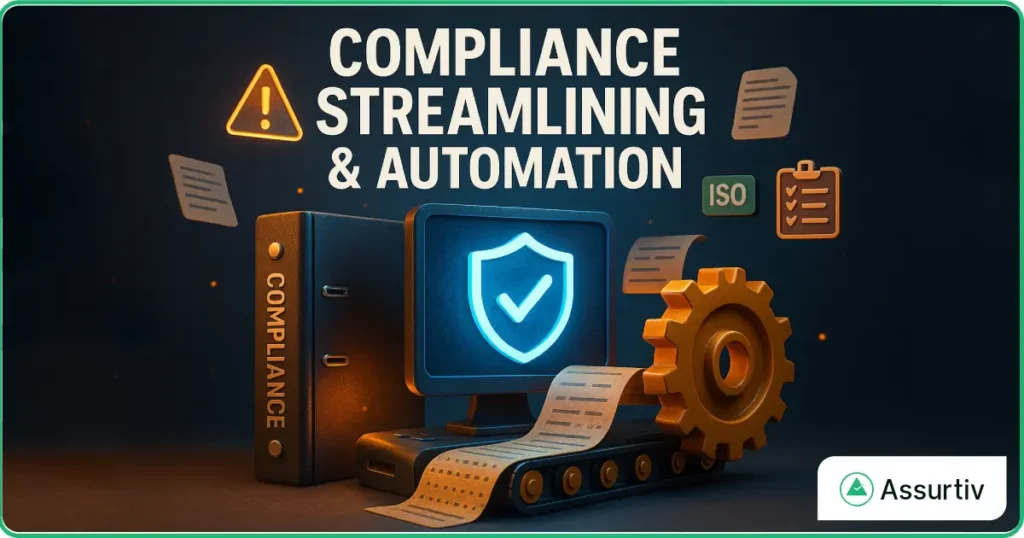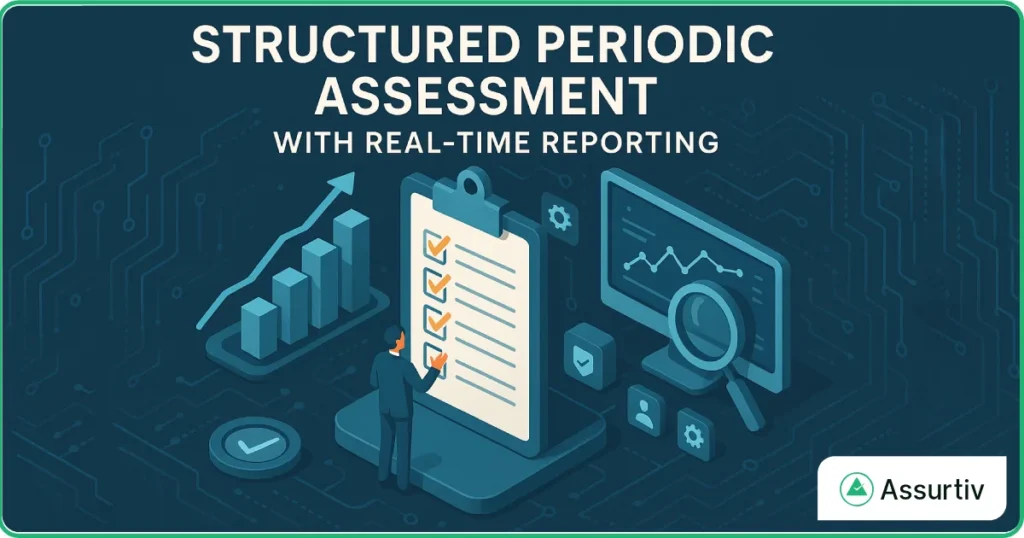Compliance Streamlining and Automation: Turning a Burden into a Business Advantage
17 Oct 2025
In today’s regulatory landscape, compliance is no longer optional, it’s a license to operate. Whether it’s ISO 27001, SOC 2, GDPR, HIPAA, or the new DPDP Act in India, organizations are constantly challenged by the complexity, cost, and time required to maintain compliance.
Manual methods- spreadsheets, emails, and scattered documentation, are not only inefficient but also leave organizations exposed to risks of oversight, delays, and audit failures. The need of the hour is compliance streamlining and automation, a modern approach that transforms compliance from a cost center into a strategic enabler of trust and growth.
Why Compliance Streamlining Matters
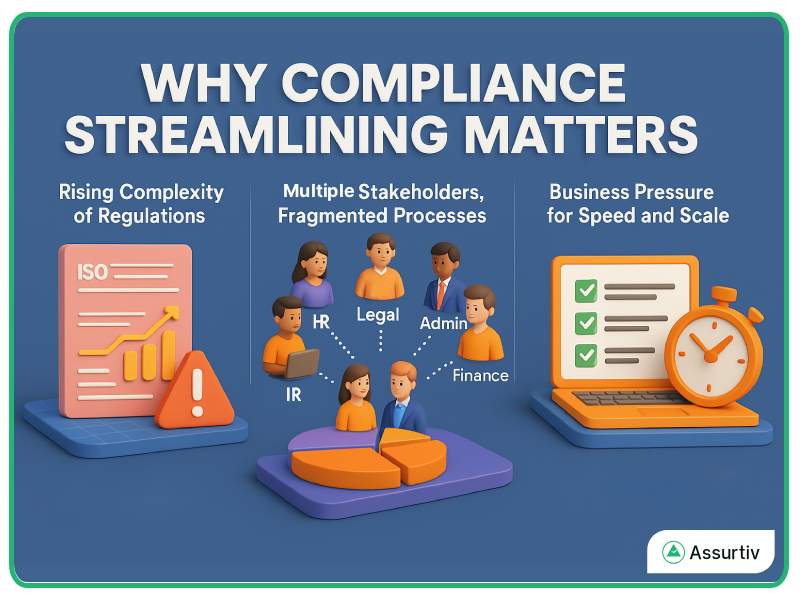
Rising Complexity of Regulations
Every year brings new frameworks and revisions. For example, the transition from ISO 27001:2013 to ISO 27001:2022 requires organizations to reassess controls, documentation, and risk registers. Without streamlining, compliance becomes a never-ending fire drill.
Multiple Stakeholders, Fragmented Processes
Compliance touches every function: IT, HR, Legal, Admin, Finance, and Product. Without centralized processes, duplication of work and missed responsibilities are inevitable.
Business Pressure for Speed and Scale
Clients, partners, and regulators expect organizations to prove compliance instantly. Manual evidence collection and reporting cannot keep up with the speed of business.
What Compliance Streamlining Looks Like
Compliance streamlining isn’t about doing less, it’s about doing it smarter. It involves:
- Centralization: All compliance activities, policies, and evidence in a single platform.
- Standardization: Consistent processes for audits, risk assessments, and control testing.
- Automation: Workflows, notifications, and evidence collection that reduce human error.
When streamlined, compliance becomes predictable, measurable, and repeatable; making audits smoother and risk management more proactive.
The Role of Automation in Compliance
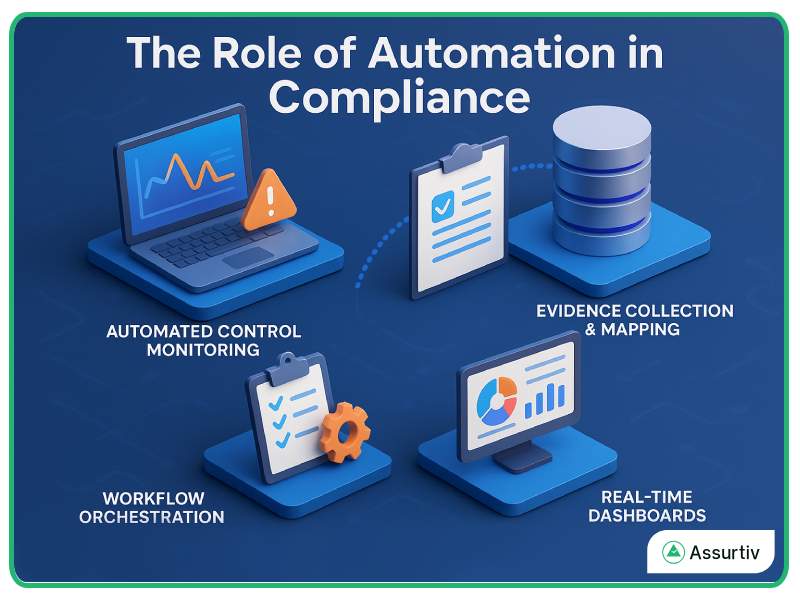
Automation is the game-changer. Instead of chasing people and documents, organizations can let technology handle repetitive tasks while teams focus on analysis and decision-making.
Here’s how automation transforms compliance:
Automated Control Monitoring: Continuous monitoring of technical controls (e.g., endpoint EDR deployment, backup tests, access reviews) ensures issues are flagged before they become findings.
Evidence Collection & Mapping: Instead of manually gathering screenshots or logs for every audit, automated connectors pull data from systems (cloud, HRMS, ticketing tools) and map them to relevant controls.
Workflow Orchestration: Automated reminders and escalation workflows ensure tasks like policy reviews, vendor assessments, and risk treatments don’t slip through the cracks.
Real-Time Dashboards: Automation powers live dashboards showing compliance status, pending tasks, and risk posture- critical for management reviews and board updates.
From Burden to Advantage
When compliance is streamlined and automated, organizations gain more than audit readiness. They unlock tangible business advantages:
- Faster Client Onboarding: Demonstrating compliance quickly builds trust with prospective clients.
- Cost Efficiency: Reduces the need for large compliance teams or expensive consultants.
- Resilience: Automated monitoring reduces downtime from overlooked risks.
- Competitive Edge: Compliance maturity becomes a differentiator in industries like SaaS, BFSI, Pharma, and Manufacturing.
Compliance in Action Example
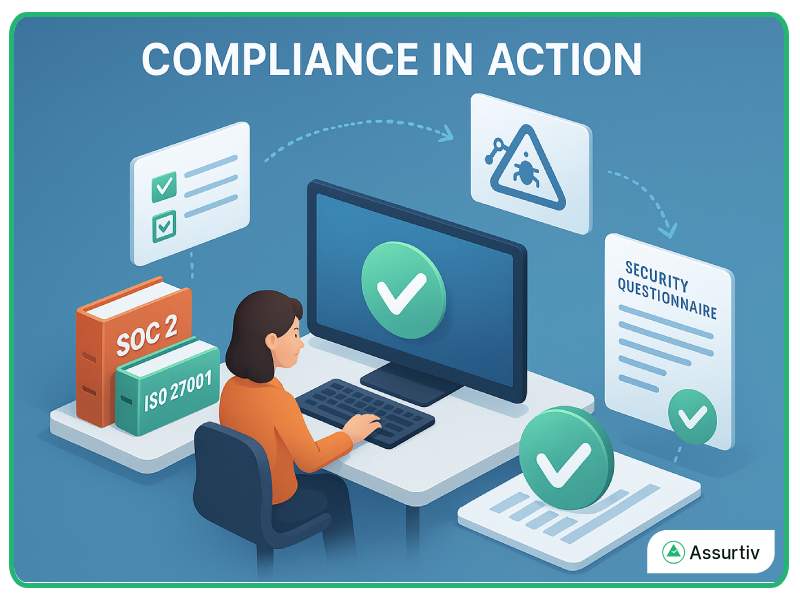
Imagine a SaaS company preparing for SOC 2 and ISO 27001 simultaneously. Traditionally, this means:
- Maintaining two sets of evidence repositories.
- Repeating risk assessments for overlapping requirements.
- Responding to client security questionnaires manually.
With compliance automation:
- Controls and evidence are mapped once, reused across frameworks.
- Risk assessments are linked to assets and threats, updating both frameworks automatically.
- Security questionnaires are answered with pre-mapped evidence from the platform.
The result: compliance cycles are cut from months to weeks, and the organization is always audit-ready.
Want to see how this works in real-world scenarios? Explore how Assurtiv helps organizations streamline compliance and stay audit-ready.
Measuring the Impact
To ensure compliance streamlining delivers real value, organizations should measure progress with clear indicators:
- KPIs (Key Performance Indicators): % of audits completed on time, average policy adoption rate.
- KRIs (Key Risk Indicators): % of high-risk vendors, number of residual risks above appetite.
- KCIs (Key Control Indicators): % of access reviews completed, % of tested backups restored successfully.
Dashboards and automated reports make these metrics visible in real time, enabling leadership to take timely action.
Future of Compliance
The next wave of compliance automation is already on the horizon:
- AI-Driven Risk Insights: Predicting compliance gaps before they occur.
- Automated Regulatory Mapping: Framework updates integrated directly into the GRC system.
- Continuous Compliance: Always-on monitoring instead of annual audits.
Forward-thinking organizations are already adopting these capabilities. Book a demo today to explore how Assurtiv can help you stay ahead of the curve.
Conclusion
Compliance doesn’t have to be a burden. With streamlining and automation, organizations can reduce costs, minimize risks, and turn regulatory requirements into opportunities to build trust and resilience.
The message is clear: stop fire-fighting and start future-proofing. Compliance, when automated, is no longer a checklist- it’s a growth enabler.
Ready to transform compliance from burden to advantage? Schedule a call with Assurtiv and discover how we can make your business always audit-ready.


